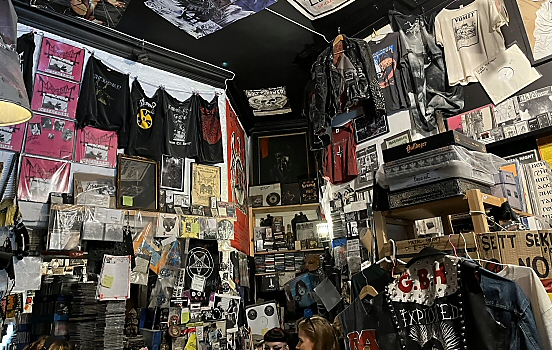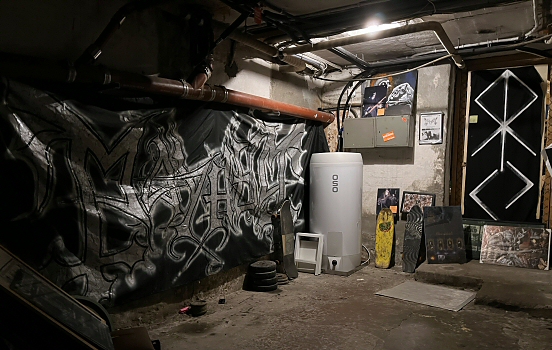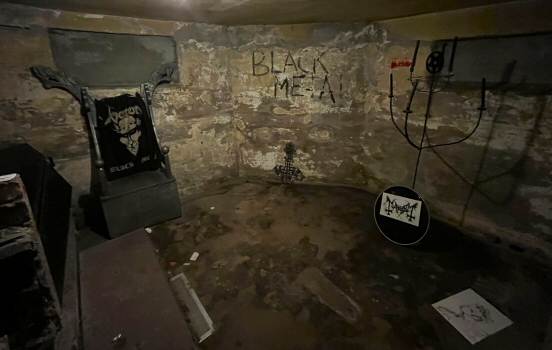Black metal is serious business in Norway. Even though you may not be able to tell the difference between a metalhead wearing corpse paint and a Siberian Husky, it’s obvious that they do mean business.
One day I was walking across the city of Bergen and happened to end up at a black metal bar. The shady place turned out to have an altar of worship dedicated to Dimmu Borgir, as well as a cabinet of curiosities featuring a shrine to the murdered Euronymous (Øystein Aarseth), founder of Norwegian black metal band Mayhem.
Mayhem is one of the most controversial black metal bands in history. As pioneers in the genre, they have had a large influence, but their dark legacy unfortunately consists of much more than music. Their Swedish vocalist Dead (Pelle Yngve Ohlin), an early adopter of corpse paint, committed suicide and his corpse morbidly ended up on the cover of a bootleg album, photographed by Euronymous.
Euronymous himself was murdered in his Oslo apartment 1993 by the former band member Count Grishnackh (Varg Vikernes), adding to the misguided myth surrounding the band. Vikernes was arguably the worst of the lot. In a sick turn of nihilistic poetry carved into flame, he burned down several churches, such as the Fantoft Stave Church in his home town Bergen, close to the former home of composer Edvard Grieg. For the Hollywood version of the events, I recommend the 2018 movie Lords of Chaos.
When I later arrived in Oslo, I knew exactly where to go.
 The chaos at Neseblod Records.
The chaos at Neseblod Records.
The very epicenter of early Norwegian black metal scene was a small record store in Oslo with the appropriate name Helvete, now called Neseblod Records. It was opened by Euronymous in 1991 and soon became a focal point for the emerging black metal scene.
 Into the cellar.
Into the cellar.
I went down the narrow spiral staircase into the damp cellar. After passing through small rooms and half-closed doors into the basement labyrinth I finally found what I was looking for.
 Into the cellar.
Into the cellar.
The air turned stale I as I entered the innermost room of the cellar. This is where the inner circle of Mayhem used to meet, to plan church burning and other sick deeds. The room is easily recognized by the text that scrawls “BLACK METAL” across the basement wall, which can be seen in early video recordings with the band. If walls could talk, these would whisper decades worth of raw music and savage ideas. People come here because what they will find isn’t taught in guidebooks, it’s something they will feel in their bones.
 The inner chamber.
The inner chamber.
Today, much has changed since those times, but the story doesn’t stop there. Norway’s black metal scene erupted in the early 1990s and mutated into something resembling a cult. It wasn’t just about music, it was a rebellion, a rite, an ideology. The basement gatherings, the corpse paint and the pseudonyms sounds more like a secret society than a guitar-heavy band from Norway.
Black metal acolytes visiting Norway these days are known as “blackpackers”. People coming to Neseblod Records will however find a different kind of black, since the store suffered a devastating fire in the basement last year. The inferno reduced vinyl and folklore to ashes, but if there’s one truth about black metal, it knows how to emerge from destruction. I’m sure that black metal will survive and rise again. Darker, harsher and even more beautiful than before.
Comments
No comments yet.
Leave a reply